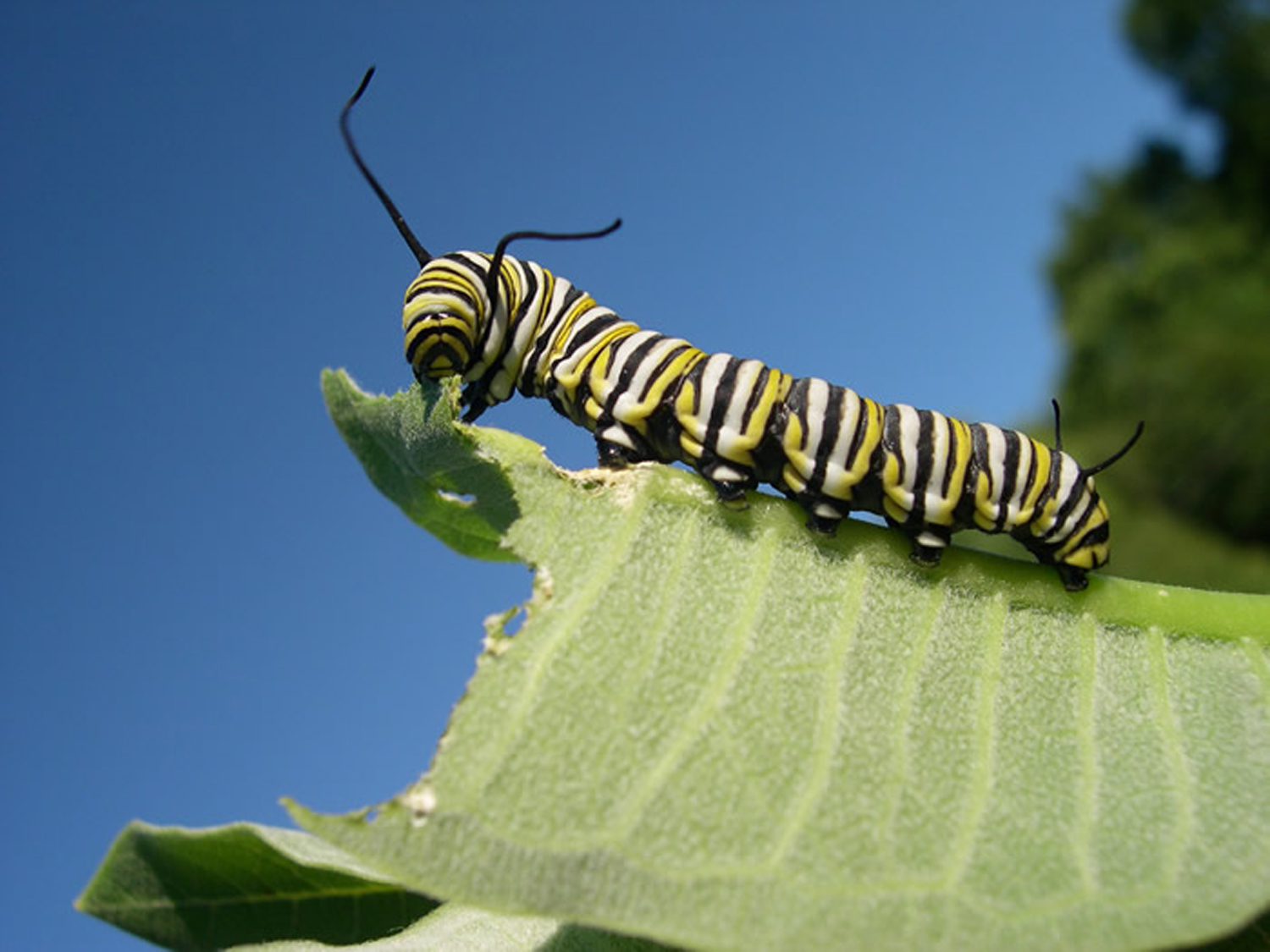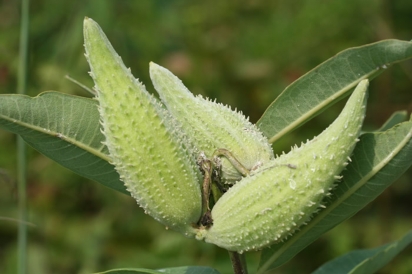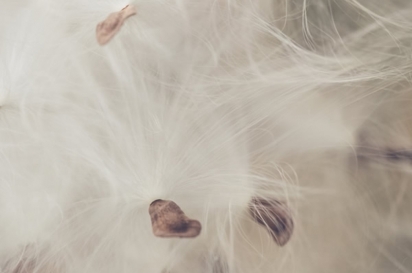Milkweed: The Metamorphosis of a Plant
It was a crisp day in late April when I visited Gereli Farm in Shefford, Quebec. The sun was high in the sky, bleaching everything with a startling brilliance and triggering a heavy snow melt. Small puddles were forming on the ground beneath icicles, and crystalline rivulets were snaking their way through snow banks. The promise of spring was in the air.
Gereli is a mixed organic farm owned by the charismatic Richard Semmelhaack. He’s best known as the creator of a potent maple syrup called Remonte-Pente (“ski lift”), once sold through the now-defunct Société-Orignal, a small Quebec-based artisan-food distributor. We were tasting syrup in the kitchen of the sugar shack when a man entered and engaged Richard in French.
Walking up the laneway a short while later, Richard told me that he was planning to put in a crop of milkweed in the summer. I had to ask twice to ensure I was hearing him right. Were we talking about the plant that grows wild and sends feathery seeds parachuting on the wind when the pod splits? Indeed, we were. It turns out that the man who came by is a local farmer who was worried that the milkweed is invasive and that his horses would get into it. (It is toxic to grazing animals.) Richard rhymed off a list of possible applications for milkweed. I could hardly believe my ears and wondered why I’d never heard of this before.
Milkweed is a new and promising crop in Quebec. Coopérative Monark in Sainte-Thècle was formed to promote milkweed, mostly to attract farmers. They conduct agricultural research on the plant and are developing the machinery and technology for harvesting. Daniel Allard, the president and a milkweed farmer, was an early adopter. His interest in milkweed was piqued in 2011 and he was charged with convincing other farmers to get on board. Allard was among the first farmers, in 2013, to plant milkweed as a crop. “He’s a real pioneer; he took a big risk,” said François Simard of Industries ENCORE3, a company that uses milkweed for its oil-absorption qualities. As a crop, it is still in the early stages of development. “It’s only in 2016 that we have established the protocol for seeding milkweed. Everything before was a learning curve,” Simard related.
To date, approximately one hundred farmers have joined the Monark cooperative. More than 750 hectares of milkweed are growing commercially in Quebec. Farms are clustered in the Trois-Rivières and Gaspé regions, with smaller groups in areas like the Eastern Townships. “We do not actively recruit farmers; those with interest find us and,” said Simard, “they’re generally attracted to agricultural innovation and doing something different.” Farmers purchase seed against the return, and it takes two years to get established before the first harvest. It is relatively low maintenance and, because it's still in the early days, the Coopérative Monark participates in the harvest.
Ten hectares of Gereli farmland were turned over to milkweed. When I talked to Semmelhaack by phone in October, he advised that the seed had been planted in July and “was hard to establish; it’s not a competitive plant,” he said. Other weeds shot up around it and he had to shear them off at the height of the milkweed to prevent them from choking out the plant's access to sunlight. Harvest won't happen for another year. He expects the financial return to be “comparable to other cereals.”
It’s no surprise that a new crop raises suspicions with farmers. To embrace milkweed, they must undergo a metamorphosis. They’ve known it as an invasive and poisonous weed. To prevent its spread, provincial authorities had declared it a noxious weed and by law farmers had to kill the plant with herbicides. But as knowledge of its benefits grew, particularly milkweed’s importance to bees and other pollinators, there’s been a shift in thinking and laws. Milkweed also offers essential habitat and food for migrating Monarch butterflies, whose population has been decreasing at alarming rates in recent years. It is the only plant on which these butterflies lay their eggs, and the plant is the only food that Monarch caterpillars will eat.
Milkweed has been removed from the noxious weed list in many provinces. “We’re breaking lots of paradigms,” said Simard. “Our biggest worry was to see if farmers would accept it knowing they had fought it their whole life.” It turns out that the plant's non-competitive nature is the thing that most recommends it.
The plant is called soyer in Quebec. Indigenous people used it medicinally to treat illnesses like asthma and dysentery, in bedding and children’s cradles for comfort and warmth, and as part of their diet. Seeds were first sent from New France to Paris in the early seventeenth century. The plant's future seemed promising; medicinal applications were explored, and the milkweed pods’ silk-like floss was woven into fabric and used to insulate clothing worn by Louis XV. But true silk and other silk-like materials displaced it and much of milkweed’s potential through the years has occurred in fits and starts.
The young spring shoots of milkweed are edible and are harvested like asparagus. Immature seedpods can be pickled, like capers. The oil from the seed is loaded with vitamins E and K and has a higher concentration of omega-3 fatty acids than flaxseed oil.
Complementary alliances are already springing up. Mékinac Bee Farm in Hérouxville, Quebec produced the first milkweed honey from the flower’s nectar this summer. François Simard described it as having a very soft and mild flavour.
It’s the developing industries, however, that are showing the greatest promise, with innovations that will secure a future for the crop. At Industries ENCORE3, Simard is transforming milkweed fibre into oil-absorbing mats and ropes for use in environmental spills. The fibre has a unique hollow structure that can absorb forty times its weight in oil without absorbing water. ENCORE3 has secured an exclusive contract with Parks Canada for its products.
Coopérative Monark has been developing thin thermal insulation from milkweed. Its potential applications are astounding – from insulation for planes and automobiles and a noise insulation for construction, to outerwear like boots. The company is making coats and gloves for the Canadian Coast Guard and garments are even being tested on Mount Everest. Monark fabricated an experimental snowsuit that Canadian mountaineer Jean-François Tardif wore on his last expedition there. Not only is it warm, but the fibre is also considerably lighter than other insulations, and on a mountain, weight is everything.
Manufacturing outerwear with fashion in mind is also underway. Brothers Jean-Philippe and Francois-Xavier Robert of Quartz Co. in Saint-Hyacinthe are now making luxury milkweed-fibre-insulated parkas, in addition to the down versions the company (under different ownership until last year) has been making since 1997. The first run of the milkweed parka sold out in three days. Quartz Co. is gathering information from its wearers which will inform the next production. Francois-Xavier Robert elaborated that, “The goal wasn’t to flood the market with milkweed jackets. It was more to try them and see what people like and don’t like and to make a better product next year. To do that we need to go through a whole season.”
The environmental benefits are numerous. Milkweed is a native plant and requires no irrigation or chemical treatment to thrive. It reproduces in part through its rhizomes, a vast root system that restores organic matter deep in the soil and maximizes microbiological activity. The biggest good-news story is the link to the health of bee and butterfly populations and milkweed. And this is what has saved it from extinction as a plant species.
About the future of milkweed outside of the province of Quebec, François Simard said, “The English media has been good at spreading the news to attract new farmers in Ontario and New Brunswick.” They’re looking in neighbouring provinces for farmers who can raise interest in their communities to share the cost of equipment. Simard and Semmelhaack are almost evangelical about milkweed’s bright future and it’s impossible not to feel just as enthusiastic about the transformation of a plant that was almost forgotten.






